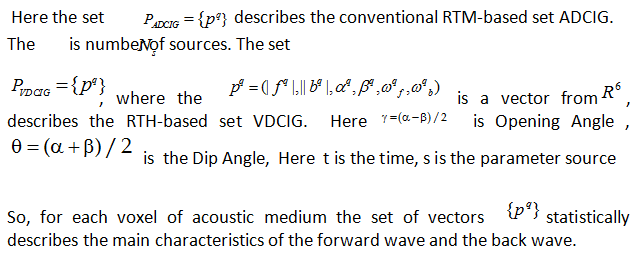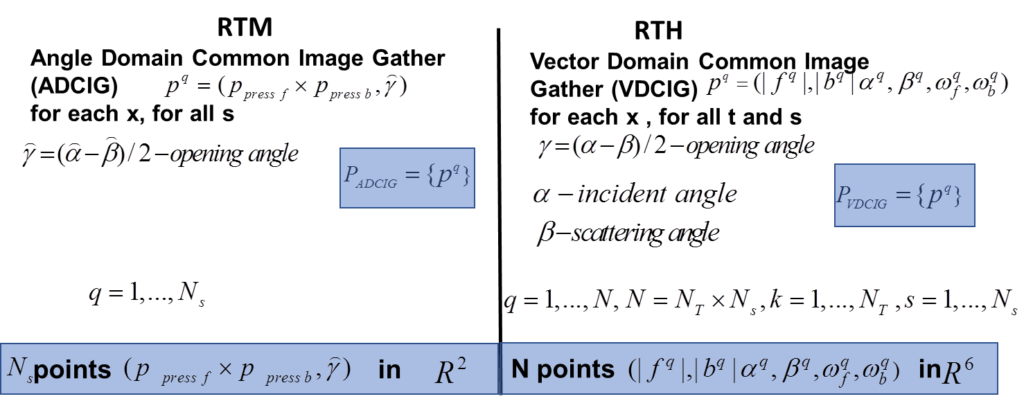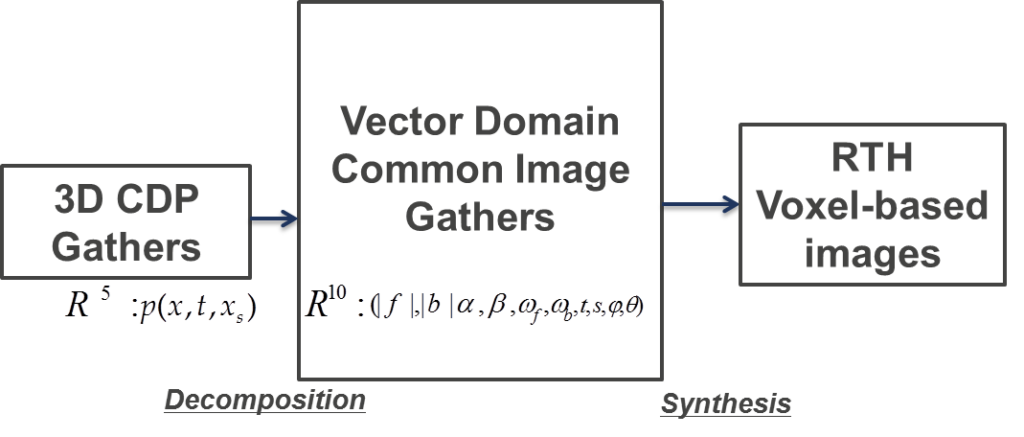Data Processing workflow
The seismic attributes estimation by the Reverse Time Holography (RTH) method is carried out in two stages: Decomposition and Synthesis.
The first stage of the RTH — Decomposition consists in the development of some Vector Domain Common Image Gathers dataset (VDCIG) by recalculation of the initial seismic data (for example, obtained using the Common Depth Point — CDP technology) . The creation of the VDCIG’s repository is based on the full vector decomposition of two vector fields: direct and the time-reversed «backward» wave (Erokhin et al., 2018a) for each 3D voxel (or 2D pixel) of the medium. There exist some conventional approaches for decomposition of forward and backscattered acoustic fields which use only pressure fields. The angles of incident and scattered waves are calculated using, for example, the Pointing vector (Yoon and Marfurd, 2006), which is accumulated on time. The RTH’s VDCIG data power is significantly greater than the data power of conventional RTM or Angle Domain RTM methods. Really, at Fig.1. the comparison between the Angle Domain Common Image Gathers (ADCIG) data power and VDCIG data power for some medium point is presented.

So, for each voxel of acoustic medium the set of vectors statistically describes the main characteristics of the forward wave and the back wave.

Figure 1: Data power comparison of RTM and RTH
The second stage of the RTH approach is to Synthesize an attributes, such as Reflection, Diffraction, Prism Wave, Dip Angle, Opening Angle, Scattering Anisotropy, Azimuthal Anisotropy, AVO attributes, Velocity, etc., based on the parameters evaluation for the VDCIG dataset. For this purpose we use the statistical estimation of the multidimensional distribution. The workflow of the RTH data processing is presented at Fig. 2.

Figure 1: Data power comparison of RTM and RTH
